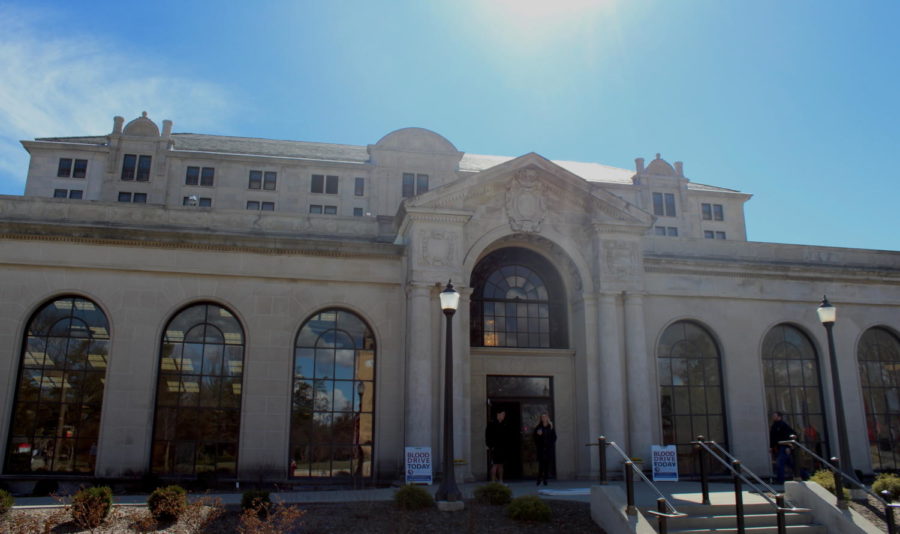A new fee for an old problem: $30 increase proposed to address deferred building needs
April 13, 2018
On Iowa State’s campus, there exists a problem so evasive it totals more than $460 million in funding to be resolved. It’s spread across all of campus, yet most students don’t even realize it when they see it.
The issue? Deferred maintenance.
Deferred maintenance is the repair or replacement of all, or part of, an existing asset that was not repaired or replaced at the appropriate time because of a lack of funds.
“Deferred maintenance will be one of, if not Iowa State’s biggest problem in the coming years,” former Student Government President Cody West said in an interview earlier this semester.
In August, the Student Government passed a recommendation to introduce a $15 fee beginning in the fall of 2018, specifically to address deferred maintenance and improvement needs in the Memorial Union.
The fee is included in the Board of Regents’ tuition and fees proposal for the 2018-2019 school year as a $30 building fee and set for approval in June.
While the fee proposal initially faced some opposition within Student Government and the student body, West was a vocal advocate for taking care of the Memorial Union in the name of fiscal responsibility.
“It costs a lot less when you can proactively address these things,” he said.
These issues typically don’t stand out to students, but their costs are monumental.
By the end of 2017, Bessey Hall faced nearly $18 million in deferred maintenance. The Molecular Biology building had a little more than $10 million.
In the Memorial Union, there is currently a total of $64,981 in deferred maintenance for “fire and life safety” assets alone.
Projects in recreation, residence and academic buildings, such as updates to the elevators in Beardshear Hall or replacing doors in the Design Building, can be completed during the summer or partially during the school year.
However, other buildings on campus such as the Memorial Union present a unique problem: the building is used by members of both the Iowa State and Ames community year round leaving little opportunity for invasive or disruptive maintenance.
However, this challenge makes upkeep in the Memorial Union even more important, Corey Williamson, associate director, said.
“Knowing how important this facility is to the campus and to the community, every little bit that we can contribute to knowing this space is in as good of condition as it can possibly be is what we will commit to that,” he said.
According to Williamson, ISU hired Intelligent Systems and Engineering Services (ISES) in 2015 to put together a full report detailing the deferred maintenance needs in the Memorial Union.
The report is broken up into two categories: non-recurring and recurring needs. These categories are further broken down into ten different project areas, such as electrical, plumbing and security.
The report was updated in 2017, and this time a ten-year plan was laid out to identify the funds needed for recurring projects. Currently, the Memorial Union faces nearly $40 million in asset renewal needs over the next 10 years.
Williamson also made sure to clarify the terminology that surrounds the issue. While “deferred maintenance” is the most commonly used term for the issue of the Memorial Union maintenance and upkeep needs, Williamson prefers to call it “deferred capital renewal.”
He has concerns that when the term “deferred maintenance” is used, blame falls on the maintenance team, when the real problem, he said, is a lack of funding from the state.
Williamson said that he “would give the maintenance team a lot of kudos because they have kept the systems going and running as efficiently as possible.”
That being said, the problem lies not with the abilities of the maintenance team, Williamson said, but with available funding for renewal needs.
The typical budget for renewal in the MU each year is $1 to $1.2 million, which, Williamson said, “doesn’t really get you very far.”
When the angled roof on the building was replaced last year, it cost $900,000, 75 percent of the total budget.
“You change one roof and that’s your budget for the entire year,” he said.
Furthering West’s sentiment that being proactive is more economically efficient , Williamson believes “it’s becoming more and more clear how important it is to build in capital renewal expenses into the function and operations of [the] facility.”
Fortunately, the mechanical team has been able to find cost effective solutions to some projects.
Last summer an HVAC unit failed in the Memorial Union and the team is currently working to integrate that unit’s workload into that of an existing, functioning unit instead of having to replace a whole unit.
With a plan finally in place, Williamson is optimistic about getting the Memorial Union’s maintenance needs back on track.

















